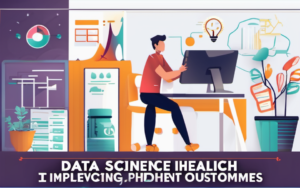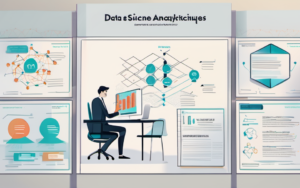Data science is an incredibly powerful tool, capable of uncovering hidden insights and driving informed decision-making. But even the most skilled data scientists can fall victim to misinterpretations, leading to humorous and sometimes disastrous outcomes. These mistakes can stem from a variety of factors, including faulty assumptions, biased data, and a lack of critical thinking. In this post, we’ll explore some of the most hilarious data science misinterpretations, examine real-world case studies, and discuss key lessons learned to avoid these pitfalls.
Data Science Gone Wrong: Hilarious Misinterpretations
The Power of Data, Misused
Data science is often portrayed as a magic bullet, capable of solving any problem with the right algorithm. However, the truth is far more nuanced. Data scientists need to be careful not to overstate the power of their findings or rely on data alone without considering context and other factors. A classic example is the “correlation does not equal causation” fallacy. Just because two variables are correlated doesn’t mean one causes the other. For instance, a study might show a correlation between ice cream sales and crime rates. This doesn’t mean that eating ice cream makes people commit crimes; it’s likely that both variables are influenced by a third factor, such as hot weather.
When Correlation Doesn’t Equal Causation
Another common mistake is misinterpreting correlation as causation. This can lead to misleading conclusions and ineffective decision-making. For example, a company might find a correlation between the number of emails sent and sales revenue. This doesn’t necessarily mean that sending more emails will lead to more sales. There could be other factors at play, such as the quality of the emails or the overall market demand.
The Perils of Biased Data
Data bias is a serious problem that can lead to inaccurate and unfair conclusions. It’s important to carefully consider the source of your data and identify any potential biases that might influence your analysis. For example, a study on customer satisfaction might be biased if it only surveys customers who have had positive experiences. This could lead to an overestimation of customer satisfaction.
Case Studies in Data Misinterpretation
The “Spurious Correlation” Classic
One famous example of data misinterpretation is the “spurious correlation” between the number of pirates and global temperature. This humorous example highlights the importance of understanding the underlying mechanisms behind any observed correlations. While the number of pirates has declined significantly over the past century, the global temperature has risen. This doesn’t mean that pirates are responsible for climate change; it’s simply a coincidence.
The “Data-Driven” Marketing Disaster
A company might decide to target its marketing campaigns based on data that shows a correlation between a certain demographic and product purchase. However, if the data is biased or incomplete, the campaign could be ineffective or even backfire. For example, a company might target a specific age group based on past purchase data, but this could be misleading if the data doesn’t reflect changes in consumer preferences or market trends.
The “AI-Powered” Hiring Fiasco
AI-powered hiring tools are becoming increasingly popular, but they can also be prone to bias. These tools might be trained on historical data that reflects existing biases in the workforce, leading to discriminatory hiring practices. For example, an AI tool might be trained on data from a company with a predominantly male workforce, leading to the tool favoring male candidates over female candidates.
Lessons Learned: Avoiding Data Misinterpretation
Question Your Assumptions
It’s important to challenge your assumptions and be open to alternative explanations. Don’t blindly accept correlations as causal relationships. Instead, consider all possible explanations and conduct further research to validate your findings.
Consider Context and Bias
Always consider the context of your data and be aware of any potential biases. Ask yourself questions like: Who collected the data? What were their motivations? What are the limitations of the data?
Validate Your Findings
Don’t rely on a single data point or analysis. Validate your findings by using multiple sources of data, testing different models, and seeking feedback from other experts.
The Importance of Data Literacy
Understanding Data’s Limitations
Data science is a powerful tool, but it’s not a magic bullet. It’s important to understand the limitations of data and be aware of the potential for misinterpretation. Data can be biased, incomplete, or simply not representative of the real world.
Critical Thinking in the Age of Big Data
In the age of big data, it’s more important than ever to develop critical thinking skills. Don’t just accept everything you read or hear about data. Question your assumptions, consider different perspectives, and be skeptical of claims that seem too good to be true.
The Future of Data Science: Accuracy and Ethics
As data science continues to evolve, it’s essential to focus on both accuracy and ethics. Data scientists need to be held accountable for the accuracy of their findings and the ethical implications of their work. This includes being transparent about their methods, addressing potential biases, and ensuring that their work benefits society.
By understanding the potential for data misinterpretation and developing critical thinking skills, we can harness the power of data science to drive innovation, improve decision-making, and create a more informed and equitable world.




